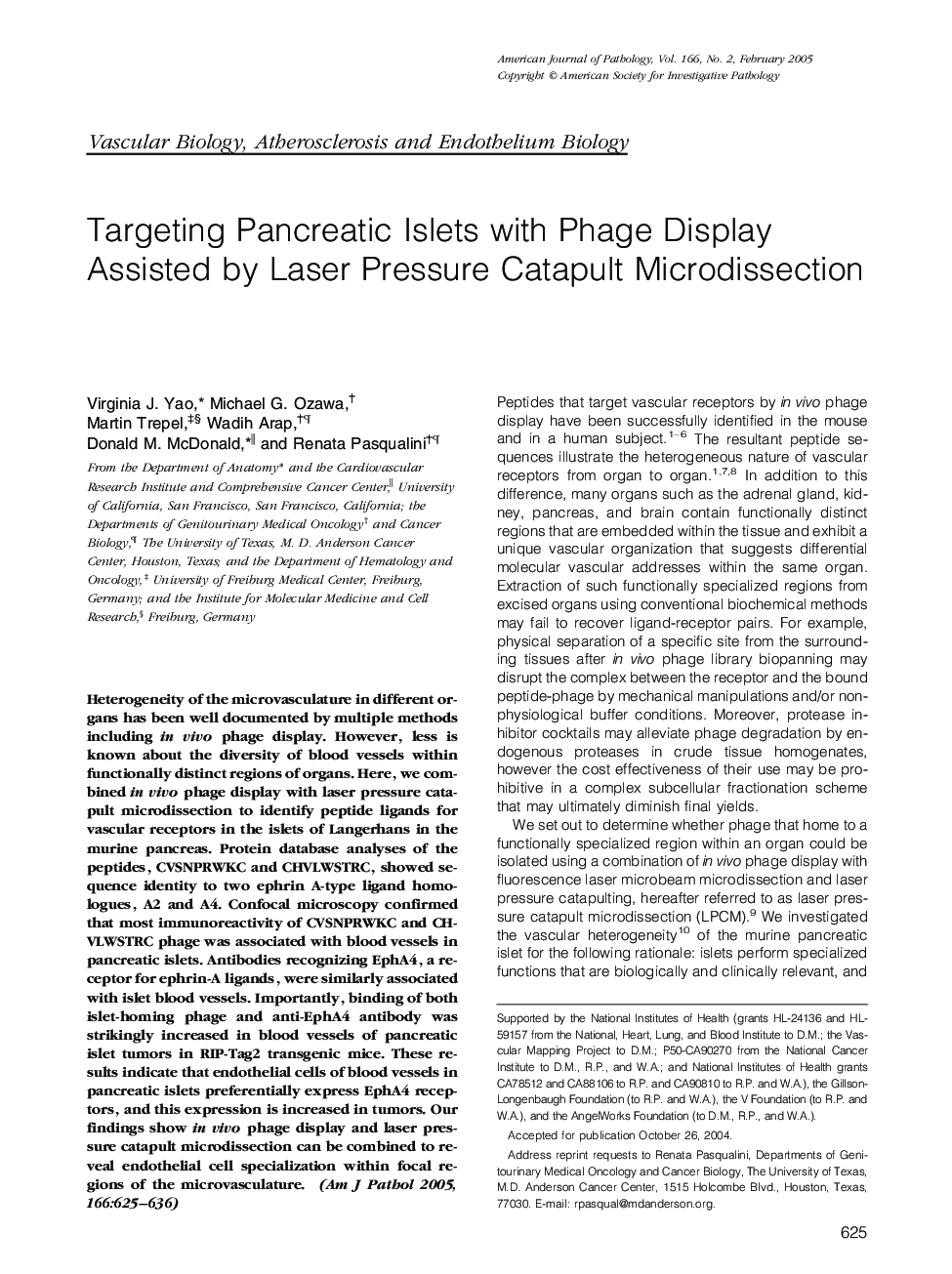| Article ID | Journal | Published Year | Pages | File Type |
|---|---|---|---|---|
| 9943480 | The American Journal of Pathology | 2005 | 12 Pages |
Abstract
Heterogeneity of the microvasculature in different organs has been well documented by multiple methods including in vivo phage display. However, less is known about the diversity of blood vessels within functionally distinct regions of organs. Here, we combined in vivo phage display with laser pressure catapult microdissection to identify peptide ligands for vascular receptors in the islets of Langerhans in the murine pancreas. Protein database analyses of the peptides, CVSNPRWKC and CHVLWSTRC, showed sequence identity to two ephrin A-type ligand homologues, A2 and A4. Confocal microscopy confirmed that most immunoreactivity of CVSNPRWKC and CHVLWSTRC phage was associated with blood vessels in pancreatic islets. Antibodies recognizing EphA4, a receptor for ephrin-A ligands, were similarly associated with islet blood vessels. Importantly, binding of both islet-homing phage and anti-EphA4 antibody was strikingly increased in blood vessels of pancreatic islet tumors in RIP-Tag2 transgenic mice. These results indicate that endothelial cells of blood vessels in pancreatic islets preferentially express EphA4 receptors, and this expression is increased in tumors. Our findings show in vivo phage display and laser pressure catapult microdissection can be combined to reveal endothelial cell specialization within focal regions of the microvasculature.
Related Topics
Health Sciences
Medicine and Dentistry
Cardiology and Cardiovascular Medicine
Authors
Virginia J. Yao, Michael G. Ozawa, Martin Trepel, Wadih Arap, Donald M. McDonald, Renata Pasqualini,
